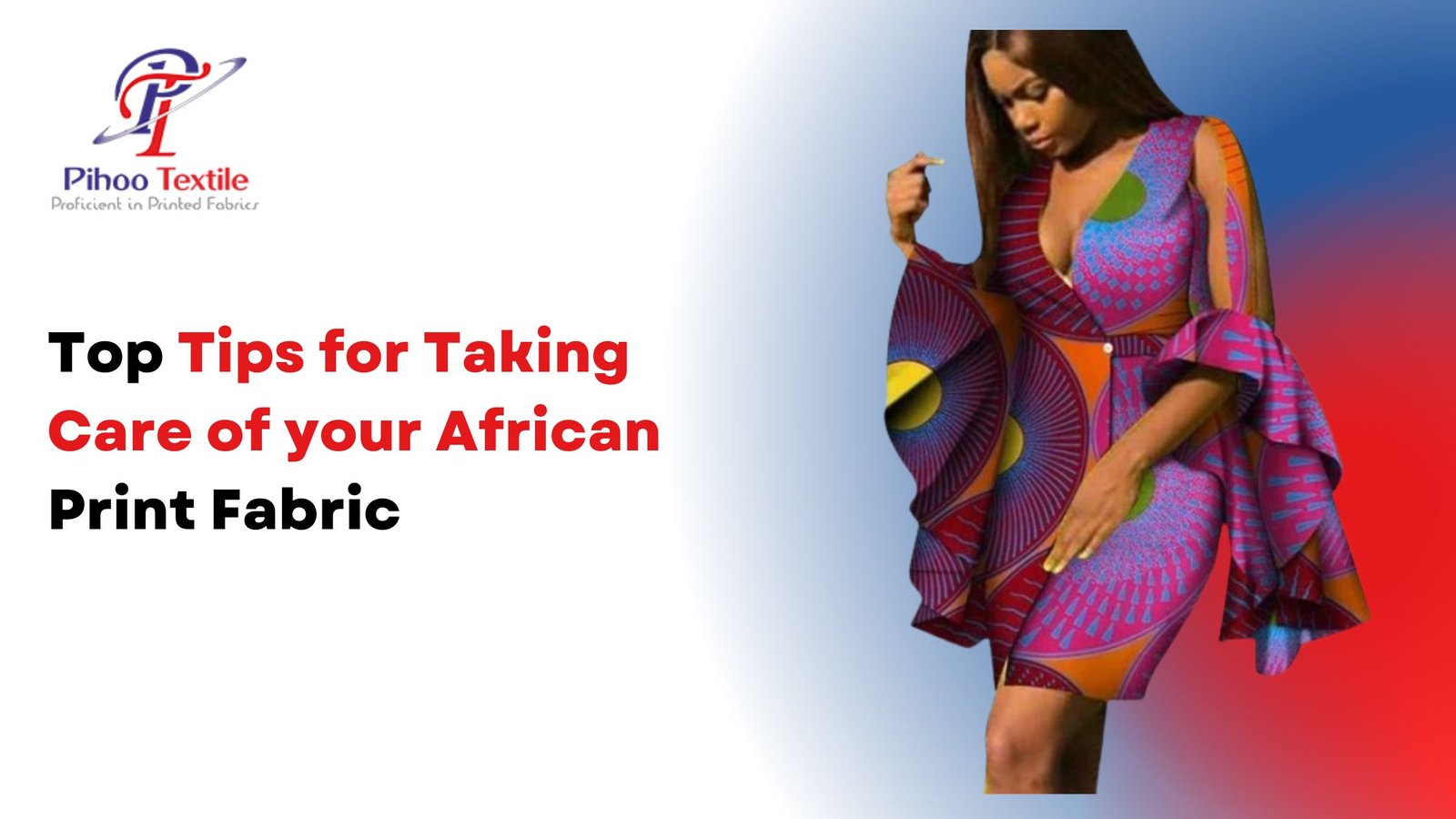Top Tips for Taking Care of Your African Print Fabric
African print fabrics are celebrated for their vibrant colors, bold patterns, and cultural significance. Whether you wear them as statement pieces or incorporate them into everyday fashion, these textiles deserve special care to maintain their brilliance and longevity. At Pihoo Textiles, we believe that understanding how to properly care for your African print fabric is essential—not just for preserving beauty, but for honoring the artistry behind every piece. Here’s your expert guide to keeping your African prints looking stunning year after year.
Why African Print Fabrics Need Special Care?
African print fabrics, often crafted from 100% cotton and dyed using wax-resist and multi-color techniques, are renowned for their intensity and vibrancy. The unique dyeing process creates intricate patterns but also makes the fabric more susceptible to color bleeding, fading, and shrinkage if not handled properly. Unlike many mass-produced textiles, African prints are works of art—each piece tells a story and deserves thoughtful maintenance.
Washing Your African Print Fabric: The Golden Rules
Always use cold water. Hot water is the enemy of African print fabrics, as it can cause colors to bleed and the fabric to shrink. Cold water preserves the integrity of the dyes and helps maintain the vibrancy of the print.
Hand wash for best results. While some African prints can be machine washed, hand washing is the gentlest method. Fill a basin with cold water and add a small amount of mild detergent. Gently agitate the fabric—never scrub or wring it. Let it soak for 10-15 minutes, then rinse thoroughly with cold water until all detergent is removed.
If you use a washing machine:
- Select a gentle cycle with cold water.
- Turn the fabric inside out to protect the print.
- Use a mesh laundry bag or pillowcase for added protection.
- Skip the spin cycle to avoid excessive wringing and potential color damage.
Never use bleach or harsh detergents. Harsh chemicals can strip away the color and weaken the fibers of your fabric. Always choose a mild, color-safe detergent designed to preserve vibrancy.
Test for colorfastness. Before washing a new piece, test for colorfastness by dampening a white cloth and pressing it to the fabric. If the color transfers, wash the item separately to prevent bleeding onto other garments.
Drying: Air is Your Fabric’s Best Friend
Avoid tumble dryers. The heat from dryers can cause shrinkage and fade the beautiful colors of your African print fabric. Instead, gently press out excess water by rolling the fabric in a clean towel.
Air dry in the shade. Direct sunlight can fade the colors, so always dry your fabric in a shaded area or indoors. Lay the fabric flat on a towel or hang it up, but avoid stretching or pulling, which can distort its shape.
Never wring or twist. Wringing can damage the fibers and cause the print to lose its crispness. Be gentle when handling wet fabric.
Ironing: Preserve the Print
Iron on the reverse side. To avoid damaging the print, always iron your African fabric inside out or place a thin cloth between the iron and the fabric. Use a low to medium heat setting suitable for cotton.
Dampen before ironing. For best results, lightly mist the fabric with water or use a steam iron. This helps smooth out wrinkles without scorching the print.
Avoid direct contact with the print. Pressing directly on the printed side can dull the colors and damage the wax finish.
Storing Your African Print Fabrics
Hang rather than fold. Hanging your African print garments helps maintain their shape and prevents deep creases, especially in waxed fabrics. If you must fold, do so gently and avoid placing heavy items on top.
Store in a cool, dry place. Keep your fabrics away from direct sunlight and dampness, which can cause fading or mildew. Using breathable garment bags can help protect against dust and pests.
Roll for long-term storage. For unworn fabric or special pieces, rolling instead of folding can prevent permanent creases and preserve the fabric’s structure.
Handling Stains and Accidents
Treat stains promptly. Dab (don’t rub) the stain gently with a damp cloth and mild detergent. Rinse with cold water. For stubborn stains, soak the area in cold water with a bit of mild soap before washing as usual.
Avoid commercial stain removers. Many contain harsh chemicals that can damage the color and fabric. Stick to gentle, natural solutions whenever possible.
Color Preservation: Keep Those Prints Popping
Wash similar colors together. African print fabrics are known to bleed, especially during the first few washes. Always wash like colors together or, ideally, wash prints separately to prevent color transfer.
Don’t over-wash. Only wash your garment when necessary. Spot clean small areas to extend the life of the fabric and keep colors vibrant.
Use fabric softener sparingly. While it can help soften stiffer wax prints, excessive use may affect the fabric’s finish.
Extra Tips for Longevity
- Remove stickers or labels with an iron before the first wash to avoid sticky residue.
- For mixed-fabric garments, follow the care instructions for the most delicate material.
- If in doubt, consult a professional cleaner familiar with African prints.
The Pihoo Textiles Promise
At Pihoo Textiles, we are committed to delivering African print fabrics that are not only beautiful but also durable and easy to care for. Our textiles undergo rigorous quality checks and are pre-washed to reduce shrinkage and color bleeding. By following these care tips, you can ensure that your Pihoo Textiles creations remain as stunning as the day you bought them.
Conclusion
Caring for your African print fabric is about more than just maintenance—it’s about preserving a piece of art, culture, and craftsmanship. With the right care, your prints will stay vibrant, comfortable, and full of life for years to come. Whether you’re a fashion enthusiast, a designer, or a retailer, these tips will help you get the most out of every piece from Pihoo Textiles.



